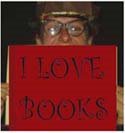
Mourlevat , Jean-Claude. Translated from the French by Y. Maudet. 2006. The pull of the ocean (L'enfant ocean in French). New York : Delacorte Press.
Plot Summary
A rural France setting, a quest to reach the ocean, and a group of seven brothers, as three sets of twins plus small mute brother, Yann. This story is simple, beautiful and poetic. Yann is understood by his brothers as being intuitive and able to communicate although he lacks speech. The parents feel he is stupid that is why he doesn't speak. The book follows the journey of these seven brothers running away from their parents in the middle of the night, because Yann talks them into it. Throughout the book, the reason for them leaving is unclear and its hinted that perhaps Yann overheard the father mentioning that he would kill them (but was really referring to the new litter of kittens just born in the barn). They run away to the ocean and eventually end up confined in a beach home holding onto to life and each other. The conclusion finds them reaching out to their parents for help, however Yann follows his heart not his brothers.
Critical Analysis
This book had some fantastic qualities that made it shine and clearly major reasons why it won the ALA Batchelder Award and the Prix Sorcieres, the prestigious French award. It highlights unique qualities of twins, poor children in rural France, and the complex emotions of runaway children. The story is loosely inspired by the classic fairy tale, Tom Thumb by Charles Perrault. Yann is extremely small, however not nearly as small as a thumb in Tom Thumb's case. Several versions of the tale include the mother and father with three sets of twins, and a small brother that is often referred as stupid or mute. Most of the more common versions of Tom Thumb however, have his character being an only child brought to a barren couple by King Arthur's Merlin the Wizard. The character of Tom is often courageous, adventurous and clever, but not particularly intuitive, intelligent or mute.
Each chapter shares a different voice, not only the boys and their parents, but also people they encounter. The author caters the narrative to each of these voices by using appropriate vernacular and references. The method is effective enabling the reader to experience the same situations among the different characters involved while still allowing the story to flow forward in a constant manner. The entire journey has depth from this method as well, giving the reader insight into not only what the boys were feeling and doing, but how they were being perceived by each other and others they encountered. Only slight reference is made to the country of origin, France. More attention is made to the rural aspect and the poverty and wealth of the people and family.
Review excerpts
"Mourlevat enchantingly blends the harshly real and the make-believe, with the latter tipping the balance as this effectively haunting, fluidly translated tale comes to a close." - Publishers Weekly
"A well-crafted mystery awaits anyone reading this fabled jigsaw puzzle." - Robyn Gioia, School Library Journal
Reviews accessed at http://www.amazon.com/Pull-Ocean-Jean-Claude-Mourlevat/dp/0385733488/ref=pd_bbs_sr_1/104-4603087-1901504?ie=UTF8&s=books&qid=1181692674&sr=8-1
Connections
Various versions of Charles Perrault's Tom Thumb
Mayer, Marianna. 2001. The Adventures of Tom Thumb. New York: SeaStar Books.
Another version available online at http://http://www.pitt.edu/~dash/perrault08.html
Hesse, Karen. 2001. Witness. New York: Scholastic Press.
This book was written in the same method with different characters voicing their perspective of the situation. You could create a lesson about composing stories in this "patchwork quilt" manner. One situation as seen by many different eyes. The writer needs to be especially conscious of using appropriate language, perspective (based on personal experiences), and relationships based on each character's chapter.
Neufeld, John. 1996. Gaps in stone walls. New York: Atheneum Books for Young Readers.
This book includes a main character who is also mute, that runs away after being suspected of murder on Martha's Vineyard. You could include this book with Pull when creating a lesson discussing the emotions of runaway children, as well as those who struggle to communicate without speech.




